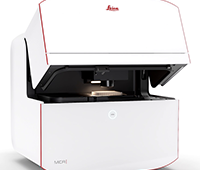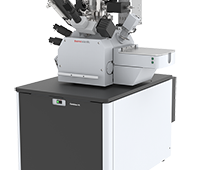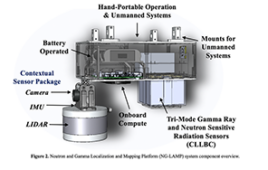Tiny particles filled with a drug could be a new tool for treating cancer in the future. A new study published by Swedish scientists in Particle & Particle Systems Characterization shows how such nanoparticles can be combined to secure the effective delivery of cancer drugs to tumour cells—and how they can be given properties to make them visible in magnetic resonance scanners and thus rendered trackable.
The team, which consisted of scientists from Karolinska Institutet (KI) and the Royal Institute of Technology (KTH) in Stockholm, and from Chalmers University of Technology in Gothenburg, developed so-called “theranostic” nanoparticles by combining therapy and diagnostics in one and the same nano material.
“For this study, we produced theranostic nanoparticles able to make pinpoint deliveries of drug payloads to breast cancer cells,” says Professor Eva Malmström of the School of Chemical Science and Engineering at KTH. “They are also detectable in an MR scanner and can therefore be used diagnostically. The building blocks that we use are biodegradable and show no signs of toxicity.”
The new study has resulted in a method of making such theranostic nanoparticles that spontaneously form themselves out of tailored macromolecules (polymers). The balance between hydrophilic (water attracting) and hydrophobic (water repelling) components are important to the successful outcome of this process, the latter being what makes it possible for the particles to be filled with the drug. A relatively high concentration of the naturally occurring isotope 19F (fluorine) makes the particles show up clearly in high-resolution MR tomograms, and by tracking the theranostic nanoparticles through the body, researchers can learn about how the drug is taken up by the tumour and how efficacious the treatment is.
The researchers filled the nanoparticles with the chemotherapeutic doxorubicin, which is used to treat cancer of the bladder, lungs, ovaries, and breast. They showed through experiments on cultivated cells that the particles, while harmless in themselves, are effective at killing cancer cells when loaded with the drug.
The next step is to develop the system to target brain tumours, pancreatic cancer and drug-resistant breast cancer tumours, which are currently difficult to treat effectively with chemotherapy.
“Adding targeting groups to the surface or by changing the size of or adding ionic groups to our nanoparticles will make it possible to increase the selective uptake of these particles in tumours,” says Dr Andreas Nyström, Associate Professor in nanomedicine at the Swedish Medical Nanoscience Center, part of Karolinska Institutet’s Department of Neuroscience.
It is hoped that one day this research will lead to tailored chemotherapy treatments that specifically seek out tumour cells. In that the drug, which is toxic to the body, can be delivered more precisely to the tumour, the treatment can be made much more effective with greatly reduced side-effects.
The study was financed through a variety of sources, including a grant each from the Swedish Research Council to Dr Nyström and Professor Malmström, who also are affiliated to Polymer Factory Sweden AB.
In Vitro Evaluation of Non-Protein Adsorbing Breast Cancer Theranostics Based on 19F-Polymer Containing Nanoparticles
Source: Karolinska Institutet




